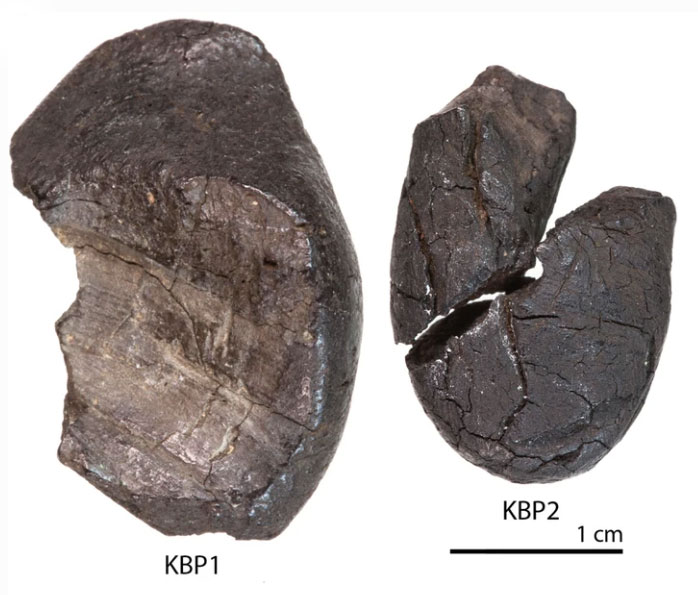 TÜBINGEN, GERMANY—According to a Phys.org report, a new chemical analysis of two pieces of birch tar unearthed in Germany suggests that Neanderthal techniques for creating adhesives were more complex than previously thought. Birch tar was used as an adhesive to connect stone to bone and wood in Neanderthal tools and weapons, and it had been previously suggested that Neanderthals may have scraped birch tar from rocks after a fire. Researchers from Eberhard Karls University experimented with five possible ways to duplicate the Neanderthal birch tar. Two of the techniques were carried out aboveground, and two were tested underground. Once the birch tar had been extracted in the five test methods, it was analyzed with infrared spectroscopy, gas chromatography-mass spectrometry, and micro-computed tomography. The results were then compared with the results for the ancient samples. The lack of oxygen and soot-related carbons in the modern samples showed that the ancient ones had been produced underground. The researchers noted that the underground techniques require a more precise set-up, since adjustments cannot be made once the procedure begins. Read the original scholarly article about this research in Archaeological and Anthropological Sciences. To read about the earliest known piece of cord, go to "Twisted Neanderthal Tech."
TÜBINGEN, GERMANY—According to a Phys.org report, a new chemical analysis of two pieces of birch tar unearthed in Germany suggests that Neanderthal techniques for creating adhesives were more complex than previously thought. Birch tar was used as an adhesive to connect stone to bone and wood in Neanderthal tools and weapons, and it had been previously suggested that Neanderthals may have scraped birch tar from rocks after a fire. Researchers from Eberhard Karls University experimented with five possible ways to duplicate the Neanderthal birch tar. Two of the techniques were carried out aboveground, and two were tested underground. Once the birch tar had been extracted in the five test methods, it was analyzed with infrared spectroscopy, gas chromatography-mass spectrometry, and micro-computed tomography. The results were then compared with the results for the ancient samples. The lack of oxygen and soot-related carbons in the modern samples showed that the ancient ones had been produced underground. The researchers noted that the underground techniques require a more precise set-up, since adjustments cannot be made once the procedure begins. Read the original scholarly article about this research in Archaeological and Anthropological Sciences. To read about the earliest known piece of cord, go to "Twisted Neanderthal Tech."
Study Suggests Neanderthals Concocted Adhesives
